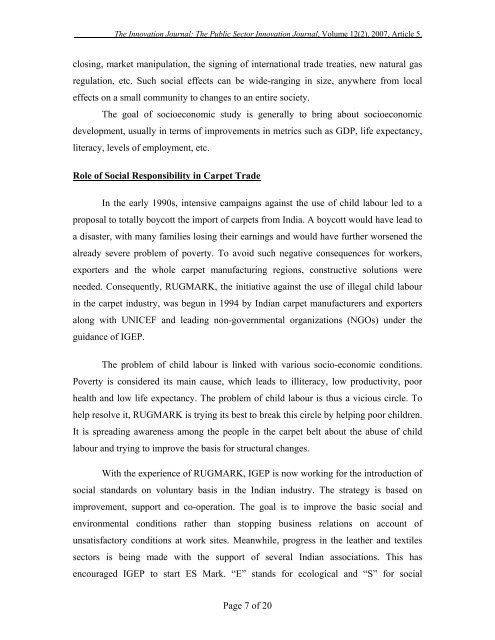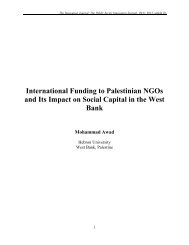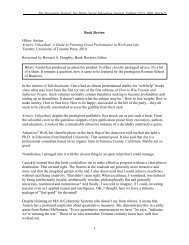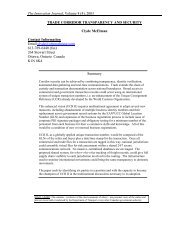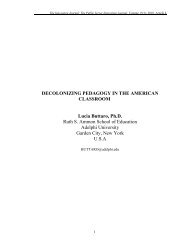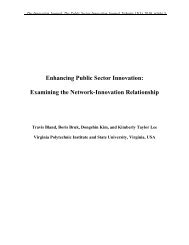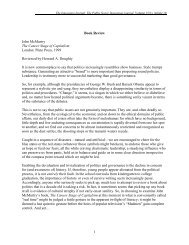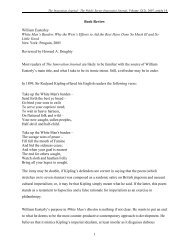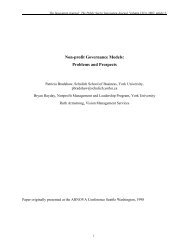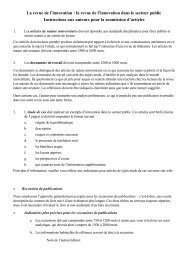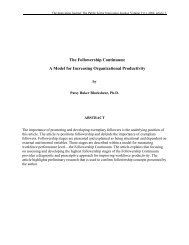Handmade Carpets: - The Innovation Journal
Handmade Carpets: - The Innovation Journal
Handmade Carpets: - The Innovation Journal
Create successful ePaper yourself
Turn your PDF publications into a flip-book with our unique Google optimized e-Paper software.
<strong>The</strong> <strong>Innovation</strong> <strong>Journal</strong>: <strong>The</strong> Public Sector <strong>Innovation</strong> <strong>Journal</strong>, Volume 12(2), 2007, Article 5.<br />
closing, market manipulation, the signing of international trade treaties, new natural gas<br />
regulation, etc. Such social effects can be wide-ranging in size, anywhere from local<br />
effects on a small community to changes to an entire society.<br />
<strong>The</strong> goal of socioeconomic study is generally to bring about socioeconomic<br />
development, usually in terms of improvements in metrics such as GDP, life expectancy,<br />
literacy, levels of employment, etc.<br />
Role of Social Responsibility in Carpet Trade<br />
In the early 1990s, intensive campaigns against the use of child labour led to a<br />
proposal to totally boycott the import of carpets from India. A boycott would have lead to<br />
a disaster, with many families losing their earnings and would have further worsened the<br />
already severe problem of poverty. To avoid such negative consequences for workers,<br />
exporters and the whole carpet manufacturing regions, constructive solutions were<br />
needed. Consequently, RUGMARK, the initiative against the use of illegal child labour<br />
in the carpet industry, was begun in 1994 by Indian carpet manufacturers and exporters<br />
along with UNICEF and leading non-governmental organizations (NGOs) under the<br />
guidance of IGEP.<br />
<strong>The</strong> problem of child labour is linked with various socio-economic conditions.<br />
Poverty is considered its main cause, which leads to illiteracy, low productivity, poor<br />
health and low life expectancy. <strong>The</strong> problem of child labour is thus a vicious circle. To<br />
help resolve it, RUGMARK is trying its best to break this circle by helping poor children.<br />
It is spreading awareness among the people in the carpet belt about the abuse of child<br />
labour and trying to improve the basis for structural changes.<br />
With the experience of RUGMARK, IGEP is now working for the introduction of<br />
social standards on voluntary basis in the Indian industry. <strong>The</strong> strategy is based on<br />
improvement, support and co-operation. <strong>The</strong> goal is to improve the basic social and<br />
environmental conditions rather than stopping business relations on account of<br />
unsatisfactory conditions at work sites. Meanwhile, progress in the leather and textiles<br />
sectors is being made with the support of several Indian associations. This has<br />
encouraged IGEP to start ES Mark. “E” stands for ecological and “S” for social<br />
Page 7 of 20


